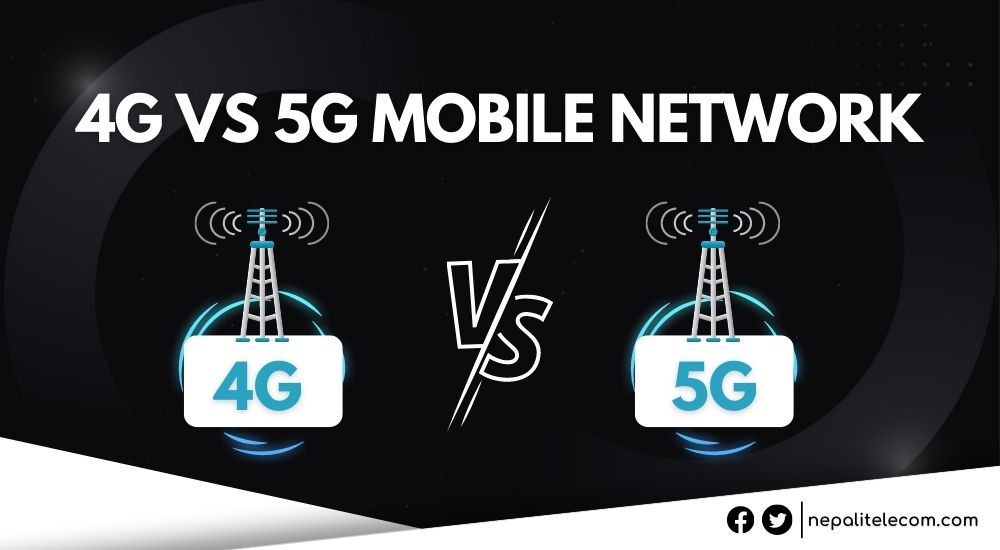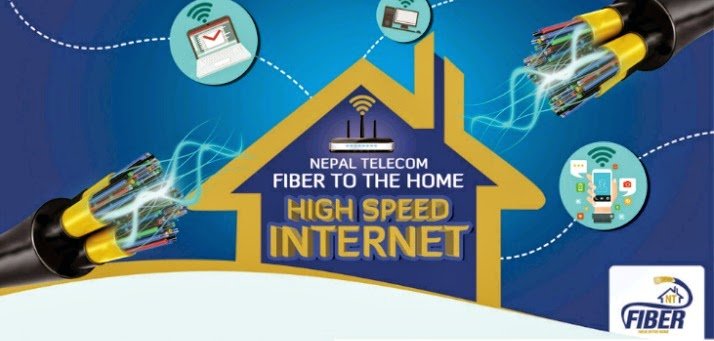Find out key differences between mobile communications’ two biggest names on “4G vs. 5G”.
Mobile communications have made a great leap in recent decades. It has taken us from the namesake internet or GPRS to the relatively efficient capacity of 3G to the true mobile broadband, 4G. Now, many states in the world are embracing the fifth generation of mobile communications 5G. This has led to the obvious question hovering over the future of 4G.
4G makes 100 Mbps a reality. The speed depends on a number of factors but regular users can expect 10s of Mbps on their 4G browsing. 5G is a different territory. It can bring Gigabits of speed to our devices in ideal conditions. We have the stat that an average 5G broadband speed is 438 Mbps in South Korea. This is the highest total registered by normal users on average. Meanwhile, in ideal conditions, the number can inflate to Gbps. Anyway, the technologies used in these two different mobile standards render them different performance capacities.
Don’t miss: 3G Vs 4G: Which mobile network should you use?
Table of contents
- 4G is still the default best network for many
- 5G soars high vs. 4G in speed
- Below 5 ms latency with 5G
- 4G still wins in coverage vs.5G
- 4G gets no ultra-high frequency & offers solid coverage
- Small cells, an answer for a potent network reach!
- Frequency (Carrier) Bandwidth
- 5G offers a higher density for devices vs. 4G
- Use cases (Applications) of 5G vs 4G
- Reality vs. Expectation
- Which one is for you if both (4G and 5G) are available?
- To summarize | 4G vs. 5G
4G is still the default best network for many
But while parts of the world have already jumped to the 5G network, and some are on the brink of commercial start, for many even 4G remains allusive. In fact, many countries still rely on 4G and see it as the best for mobile broadband. Comparing the two, there is not much comparison if we talk about the raw speed the successor brings.
But for general use cases, coverage, and convenience, 4G still wins it in the majority of the world. So, the question begs, what are the key differences between the two different mobile communication standards? We explore the difference between 4G and 5G on accounts of their speed, latency, coverage, spectrum, etc.
Also see: How to activate 4G in Ntc, Ncell and Smart Cell?
5G soars high vs. 4G in speed
Speed is the most anticipated aspect of any telecom network. With each generation of networks, the speed takes a new leap. 5G is no exception. It drowns 4G by a mile. As stated above, 5G can deliver 100s of Mbps speed to our devices. It is not unthinkable off 4G, but certainly elusive to it.

South Korea tops the 5G speed list with 438 Mbps speed on average, while Sweden follows second with 338.4 Mbps. The lowest speed of 5G can go well above 100 Mbps. 4G meanwhile, can offer over 50 Mbps speed in normal conditions but this can go low as 10 Mbps in compromising conditions. This is because 5G networks use higher frequencies. This fundamental difference makes it better than its predecessor in this key measure.

Below 5 ms latency with 5G
Perhaps the most important distinguishing factor in the 4G vs. 5G debate is latency. Latency is the response time from our individual gadget to the server. It is measured in milliseconds. The lesser the time, the better.
4G doesn’t offer a great latency performance. Latency ranges from 50 ms to 90 ms on 4G. 5G meanwhile, enables an incredible latency capacity. The 5G networks offer below 5 ms latency. It is almost as low as 4G’s by 5 to 10 times.
With almost perfect latency, 5G enables seamless connectivity for online gaming, streaming, AI, VR, IoT, etc. So, if the world moves towards 5G for new use cases, the better.
Also see: 2G or 3G? Which Mobile Network Will Shut Down in Nepal?
4G still wins in coverage vs.5G
Coverage is one key possible deal-breaker in 5G. 5G networks use high frequencies to deliver high-speed throughput but this inversely affects the coverage. 5G runs in three different bands- high-band, mid-band, and low-band. The high band (above 6 GHz) or mmWave offers coverage within a few meters only. This is only useful for airports, clubs, or stadiums. Low-band (600 MHz – 700 MHz band) offers great coverage but it offers no more substantial speed than 4G making the entire idea of 5G obsolete. Operators have thus begun employing mid-band frequencies (2 GHz – 6 GHz) that guarantee a decent 5G speed as well as coverage.
Anyway, 5G pales in comparison to 4G when we take into account the coverage efficiency. Given how important they can be for our connectivity, 5G may not be 100 percent reliable for many. This also means networks require more base stations for operators than 4G. They will have to invest more to bring the ultra-fast mobile broadband experience.
Another thing is that 4G is widely available across the world while 5G is just getting started. Far more people are still on 4G or upgrading to it, while the whereabouts of 5G is up in the air for many.
Also check out: Which Phone Brands Have Band 20 4G Support and VoLTE in Nepal?
4G gets no ultra-high frequency & offers solid coverage
5G’s phenomenal potential owes to its use of ultra-high frequency aka mmWave. The above 28 GHz band allows 5G to clinch milestone Gbps of speed over short distances. However, 4G natively doesn’t use mmWave bands. It uses lower bands such as 800/900/1800/1900/2300/2600 MHz. It comes with its own perks. Lower frequencies travel longer distances while higher radio signals also struggle against physical barriers, even glass. A 4G signal can go 10s of kilometers something 5G waves can’t achieve fundamentally.
But as a workaround, operators also offer 5G in low bands, below 1 GHz. The US is a prime example of it. However, the caveat is that it doesn’t offer a substantial improvement upon 4G making the whole idea of high-speed broadband pointless.
Small cells, an answer for a potent network reach!
Due to the use of high-band (mmWave) frequencies, 5G uses small cells that help mitigate potential signal loss. This means the operators will need to place small cells at various locations to keep their users stay connected. This will ensure that maximum people within the coverage can stay connected with a strong signal.
Using small cells is important because 5G operates in higher frequencies compared to 4G. As high-frequency signals are shy of reaching a wider area, small cells help cover the distances. It is useful to deliver superfast connectivity in shopping malls, stadiums, and campuses. 4G can also use small cells, but it does not use a high-band spectrum but for 5G, it is an inherent requirement. Small cells in the 5G network allow companies to deliver high-speed data to more phone users.
Find in detail: 5G vs Fiber: Find Out Which Is Better?
Frequency (Carrier) Bandwidth
Coming to the 4G vs. 5G topic, a 4G carrier uses a max 20 MHz channel for data transmission. 5G, its successor uses 100 MHz to 800 MHz channels. The huge difference in channel capacity means that 5G can transmit signals with more efficiency and at a greater capacity. It is another ground where the successor beats the predecessor flat out.
5G offers a higher density for devices vs. 4G
5G is capable to offer 10 times more connected devices for every square kilometer of a network. For comparison, a 4G network can allow for 100,000 devices to operate simultaneously per square kilometer. On the other hand, 5G boosts the number to a whopping 1 million devices, That is with the fifth-generation cell towers, more devices will get connected. Your smartphones, vehicles, future drones, and IoT, all will have far better connectivity and utility than when they are on a 4G network.
In sum, 5G will help create a more efficient and robust network of connected devices which is an urgent need for a smart urban settlement.
Do read: 5G Users to Exceed 1 Billion in 2022, India to Add 30 MN
Use cases (Applications) of 5G vs 4G
With speed increasing multi-folds and the slimmest latency at disposal, communications are taking a major leap. A 5G network will allow us to download multi GBs of video in a few seconds. Watching or downloading 4K and 8K contents won’t be a pain on the network. Streaming, online gaming, IoT, and Metaverse will smoothly proliferate with faster data at hand. Telehealth, remote surgery, and even delivery by drones will be more mainstream.

5G will also keep far more devices will stay connected. With more use cases and faster data, digital economy and transformation will significantly raise the possibility for nation-states.
4G meanwhile is not to be understated. It has made buffering a thing of the past on videos. It plays HD content smoothly, allows video conferencing, and lets us download moderately large-size files in a short time. Besides, browsing has never been cumbersome on 4G. At least for the next few years, it will remain relevant as HD remains the standard multimedia and at least until IoT, AI, and AR/VR becomes widespread.
Reality vs. Expectation
One area to include the 4G vs. 5G topic is the expectation against the romanticized idea of what 5G brings to the table. As of now, countries are still expanding the network. Operators, developers, and governments are still finding ways to justify the adoption of 5G amidst a perfectly working 4G technology. So, Gigabits of speed, a totally transformed urban landscape, and a surreally well-connected eco-system are well beyond us for now. The concern with coverage and ratio is still there.
However, the seeds are grown. Technology is constant and goes through innovations and improvements. 4G gave us broadband internet on mobile phones. It gave us smooth video watching, decent gaming, file downloads, etc. However, the technology is focusing on the metaverse. The internet of things (IoT) is developing, and AI and VR/AR are becoming more prominent. 4G due to its high latency, and lower user density capacity, won’t meet the growing demands of advanced connectivity.
Also recommended: 2G, 3G, 4G, and 5G explained in simple terms
However, technology develops fast. Developers are geared up to unleash new possibilities with 5G. At the same time, smartphones, a key component of a mobile network are becoming cheaper and broader these days. We even have Nokia CEO claiming that mobile phones won’t be the device when we start using 6G in a few years’ time hinting at how fast technology can move. This conspicuously tells us how fast 5G development is taking place among select nations. 4G has served us well but the arrival and boom of 5G are inevitable and for the better.
Which one is for you if both (4G and 5G) are available?
Let’s ponder on which one would be for you if both were available. Which mobile network should you be on? 5G gives you a much faster speed you can use for intense use cases such as online gaming, streaming, AI, VR, and the metaverse. Besides, 5G offers better device mobility and consistency if a strong signal is noticeable. Choose it when it is available for it’s simply bigger and better than 4G.
But if a 5G signal is weak, or you don’t need extremely fast speeds, 4G is good to take care of your needs. Plus, operators may not bring voice service soon with the launch of 5G. At that point, VoLTE which has become common in 4G networks can be handy for you. VoLTE gives you HD sound quality on calls, along with several other features including Video calls. The choice is yours but if speed and efficiency is your need, go for 5G if it is available.
Learn: Meaning of Mobile Network Signs | G, E, 3G, H/H+, 4G, 5G, VoLTE
To summarize | 4G vs. 5G
| 4G Vs 5G Comparison | 4G | 5G |
| Speed (varies among places) | 50 – 100 Mbps | 100 – 400 Mbps |
| Coverage | tens of km | few km (from the lowest 50 meters) |
| Latency | 50 – 100 ms | below 5 ms |
| Spectrum | 600/700 MHz, 2.5 GHz | 600 MHz – 6 GHz, above 28 GHz (mmWave) |
| Applications (Use cases) | Video conferencing, File downloads, browsing, IoT, etc | HD Streaming, Remote surgery, Automated cars, Drones, Massive IoT, AI, VR/AR, etc. |
| User density | 100,000 devices (1 lakh) | 1 million devices |
In sum, 5G carries the potential to bring a great digital transformation to the economy and society playing with widescale applications from health and education to automated cars, drones, AI, etc. The beginning will be costly as it’s a new technology, however, it will add a proportionate value to telecommunications and industry in general. Meanwhile, many companies like Adani group in india are pondering private 5G networks to exploit 5G’s great throughput and low latency which is not possible with 4G.
As we mull over 5G and its romanticized speeds, the fact is it is not even launched in most parts of the world. However, the nation-states are already working on 6G development. The next decade will be very interesting to see in mobile communications development.
If you want to contribute more to the hot 4G vs. 5G debate, you can drop your input in the comments below.













